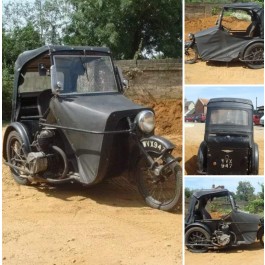|
|
Thundersley InvacarDescriptionThundersley Invacar.In 1948, Bert Greeves adapted a motorbike for exclusively manual control with the help of his paralysed cousin, Derry Preston-Cobb, as transport for Preston-Cobb. In the number of former servicemen disabled in the Second World War they spotted a commercial opportunity and approached the UK government for support, leading to the creation of Invacar Ltd. The British Ministry of Pensions distributed Invacars free to disabled people from 1948 until the 1970s. Most early vehicles were powered by an air-cooled Villiers 197 cc engine with Dynastart, but when production of that engine ceased in the early 1970s it was replaced by a much more powerful 4-stroke 500 cc or 600 cc Steyr-Puch engine, giving a reported top speed of 82 mph (132 km/h). During the 1960s and 70s the Invacar, with its modern fibreglass shell and ice-blue colouring—nicknamed Ministry Blue after the Ministry of Health was produced in the tens of thousands. Developments—including an extended wheelbase, widened track and use of Austin Mini wheels—saw the Invacars right through to the end of the final DHSS contract in 1977. More than 50 variants were produced. Half of the Invacars were made by AC Cars in Dutton, with the rest made by Invacar Ltd in Thundersley, Essex Detailed Information
Additional InformationAdditional Information
|



